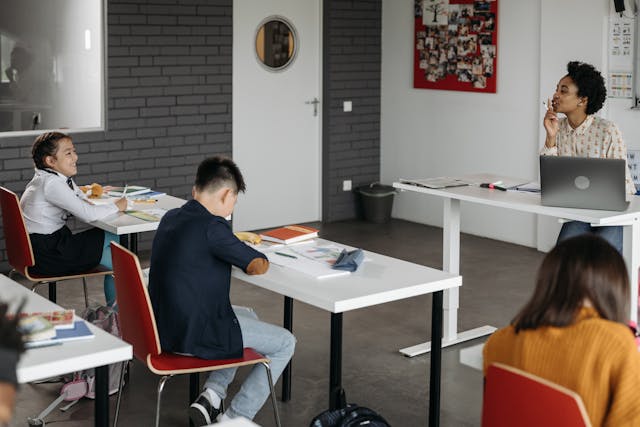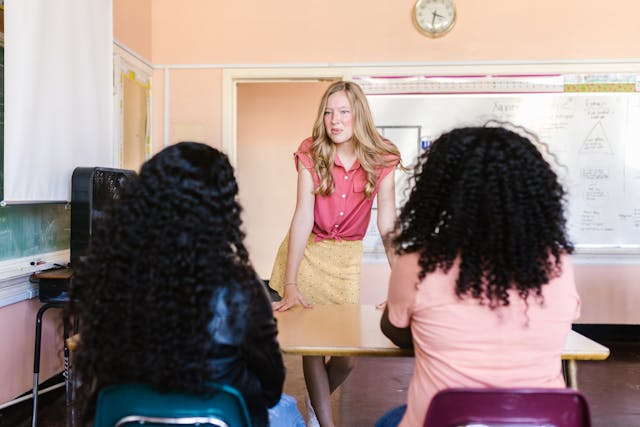Tier 2 interventions in MTSS: Strategies & examples

According to recent research, an estimated 7.3 million students in the United States need and would benefit from behavioral support and targeted interventions. Schools with a Multi-Tiered System of Support (MTSS) framework have structured academic, behavioral, and social-emotional supports in place that ensure every student has access to what they need to succeed. When Tier 1 strategies aren’t enough, Tier 2 tactics offer additional targeted support.
Tier 2 interventions are more than just “extra help,” though. They’re proactive, expertly crafted, evidence-based supports designed to meet the needs of students who aren’t excelling with Tier 1 support alone, and don’t quite need the extent of highly individualized support in Tier 3 support. Tier 2 support is short-term, data-driven, and often delivered in small-group formats through frequent sessions meant to accelerate growth in targeted areas.
Read on to learn more about academic and Tier 2 behavioral and academic interventions. We’re sharing practical examples and best practices for progress monitoring and implementation within an MTSS framework.
How Tier 2 fits into the larger MTSS framework
Part of the MTSS framework is the Positive Behavior Interventions and Supports (PBIS) pyramid, which provides a visual representation of how schools can support students with varying needs and abilities. It’s essential to note that MTSS Tier 2 interventions impact more than just academics. They provide behavioral and social-emotional support, too.
Here’s a look at the MTSS framework:
- The bottom layer of the pyramid—Tier 1—represents the core, universal support that all students receive. While it’s sufficient for many, it’s not enough for every student.
- The second tier offers additional academic and behavioral support that goes beyond what Tier 1 can provide. Tier 2 is designed for those students who’d benefit from closing skill or behavior gaps before they widen further. Research suggests that approximately 10–15% of students could benefit from Tier 2 support.
- Tier 3, at the top of the pyramid, provides intensive, individualized support for students who require the most assistance.
Research shows that MTSS’s three-tiered approach enables schools to help students with more than just schoolwork. In studies, schools that adopt the MTSS framework have been shown to significantly enhance their ability to provide students with much-needed mental health support in addition to meeting academic needs.
When to use Tier 2 interventions
Tier 2 interventions are used when students aren’t responding adequately to basic Tier 1 supports and aren’t yet in need of Tier 3 interventions. They don’t yet require more intensive individualized help, but they need more support than what Tier 1 strategies address.
It’s important to note that Tier 2 is preventative, not punitive. This is the place to catch students early, before small gaps start to widen into larger, more complex problems. Early identification and consistent progress monitoring are key in preventing future academic issues in any student’s journey.
You can identify Tier 2 needs with:
- Screening results: You conduct academic or behavioral universal screeners that reveal a student is at risk.
- Performance trends: You recognize persistent low achievement or notice skills below grade level in specific domains.
- Behavioral flags: A student receives discipline referrals, is disengaged, or repeatedly causes classroom disruptions that Tier 1 strategies aren’t effectively addressing.
Eligibility for Tier 2 interventions is determined on a case-by-case basis. A combination of factors—including screening data, teacher input, and support teams—helps identify at-risk students.
“School counselors can partner with school staff by helping to educate about signs a student may be struggling and then having open and regular dialogue about those students and their needs.”
- Laura Magnuson, MA, MS, LAMFT, VP of Clinical Engagement
Tier 2 Academic intervention strategies
Tier 2 academic intervention strategies target learning obstacles or skill gaps uncovered in your data. Proven strategies improve the support you offer students.
Small-group instruction
When the data indicates that a cluster of students is struggling with a core subject (like math or reading), you can form small groups (typically three to five students) for targeted, frequent lessons.
For example, a reading group might work together to practice decoding materials three times a week. This concentrated work quickly closes gaps, allowing at-risk learners to demonstrate significant gains in a relatively short period.
Skill-specific instruction
To offer skill-specific instruction, teachers must intensely focus on a student's deficit. Then, they use frequent, short sessions that are highly structured to target the area of need. For instance, a student who’s stuck on multiplication facts can practice with timed games while tracking progress as they work toward grade-level benchmarks.
Targeted academic tutoring
For students who don’t get enough support from basic classroom instruction, supplemental tutoring can make a stark difference. Receiving tutoring from teachers before, during, and after school can create measurable improvement. You could offer before-school writing labs for struggling students. Labs can offer scaffolded guidance on how to organize and plan writing assignments. This time can also be used for regular check-ins that monitor progress and provide individualized feedback.

Tier 2 Behavioral intervention strategies
Tier 2 behavioral intervention strategies are another layer of support. Like academic support, behavioral support should be tailored and proactive.
Check-in/Check-out (CICO)
Structured Check-in/Check-out (CICO) processes ensure each student who needs it has a mentor for daily check-ins with teachers. Establishing morning and afternoon checkpoints can also boost the student-adult connection. Consider tracking progress visually during CICOs so you can spot any warning signs and celebrate wins.
Social skills groups
If a student is struggling to navigate peer relationships, brief group gatherings—even if they’re only weekly—can be an effective way to help them learn social skills. Groups that emphasize real-world scenarios tend to be the most effective. Teachers can host groups that help students:
- Practice empathy
- Manage their emotions
- Learn conflict resolution skills
- Deal with frustration
- Start and maintain healthy conversations with peers and teachers
- Willingly share
- Navigate peer pressure
- Manage student mental health
Self-management supports
Many students who qualify for Tier 2 behavioral interventions benefit from self-management support. Combined with periodic reviews, students can find greater independence and confidence as they learn to manage routines and monitor their behavior. Ideas to focus on include:
- Explicit self-monitoring
- Goal setting
- Reflection through journaling
- Using visual trackers
- Organizational tools like color-coded planners or assignment checklists
- Rating scales
- Self-monitoring forms
- Rubrics
- Time-management logs
Home/school behavior plans
In cases where a student’s challenges are related to the home environment, setting up a goal-tracking system that allows for family input can be useful. Consistent communication from teachers is paramount for home/school behavior plans to work. One way to achieve this is by creating a daily or weekly behavior report that’s shared with all teachers, caregivers, counselors, and others who monitor a student’s progress.
Best practices for implementing Tier 2 interventions
MTSS is most effective when tiers are intentionally implemented and reviewed often. School teams can ensure tier 2 interventions offer maximized benefits with the following tips:
- Match interventions to specific needs: Use screening data and progress tracking to determine which strategies will best address a student’s challenges.
- Deliver interventions consistently: Interventions should be used as designed every time—consistency and quality are imperative.
- Monitor student progress regularly: Frequently review data and tracking to ensure interventions are beneficial and making an impact. Adjust approaches as needed.
- Utilize a collaborative, team-based approach: A team-based approach is crucial to the success of Tier 2 support within the MTSS framework. General teachers, specialists, administrators, and families or caregivers are all critical components in planning, delivering, and monitoring strategies.
- Ensure Tier 2 supports supplement core instruction: Tier 2 strategies are meant to be used as a layered approach that supplements Tier 1 support. Interventions at the new level should enhance, not interrupt, learning capacities.
- Communicate with students and families: Everyone needs to be on the same page regarding tier 2 interventions. Ensure that communication regarding progress and support is clear.
- Plan for flexibility and movement between tiers: Students should be able to transition in or out of tiers as their needs change and they grow. All team members must acknowledge and respond to ongoing data.
Empower students with early, targeted support
The sooner schools identify and address unmet learning and behavioral needs, the more likely it is that all students can thrive. Tier 2 supports are preventative, not remedial. Acting early allows you to prevent small challenges from becoming future barriers to student learning.
“Often, parents and teachers intervene during crisis moments. Those crises can be prevented by all of the ways that are discussed above. Consistent emotional support really can make a huge difference for students’ academic and emotional growth.”
- Laura Magnuson, MA, MS, LAMFT, VP of Clinical Engagement
Layered support is most powerful when schools take a holistic approach to servicing student needs. They must encompass both emotional and behavioral health in addition to supporting academic needs.
School-based mental health programs can complement MTSS Tier 2 intervention efforts by providing accessible counseling support for students whose needs exceed what Tier 1 interventions can address. If you’re looking for ways to strengthen your school or district’s Multi-Tiered System of Support framework, request a demo today to learn how Talkspace can help you ensure every student gets the support they need and deserve.






